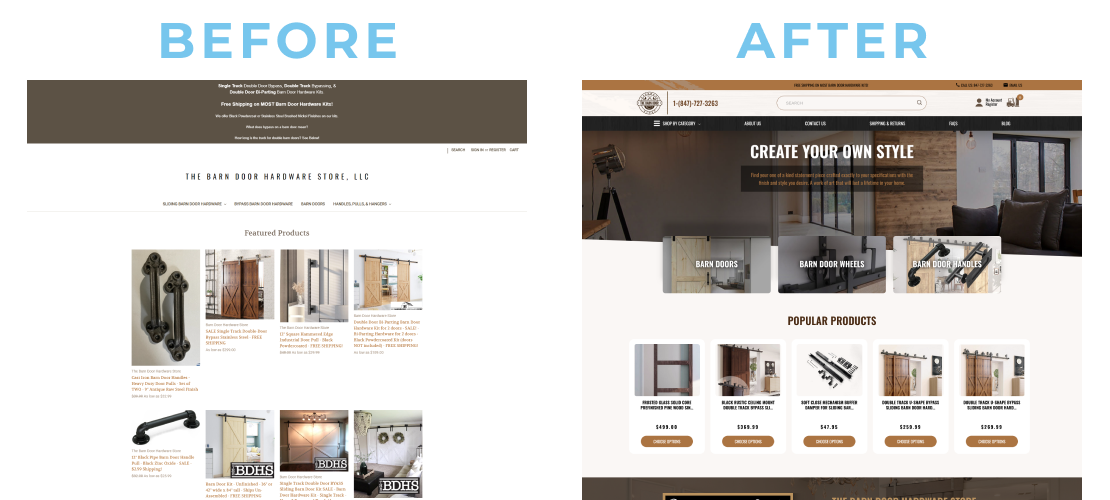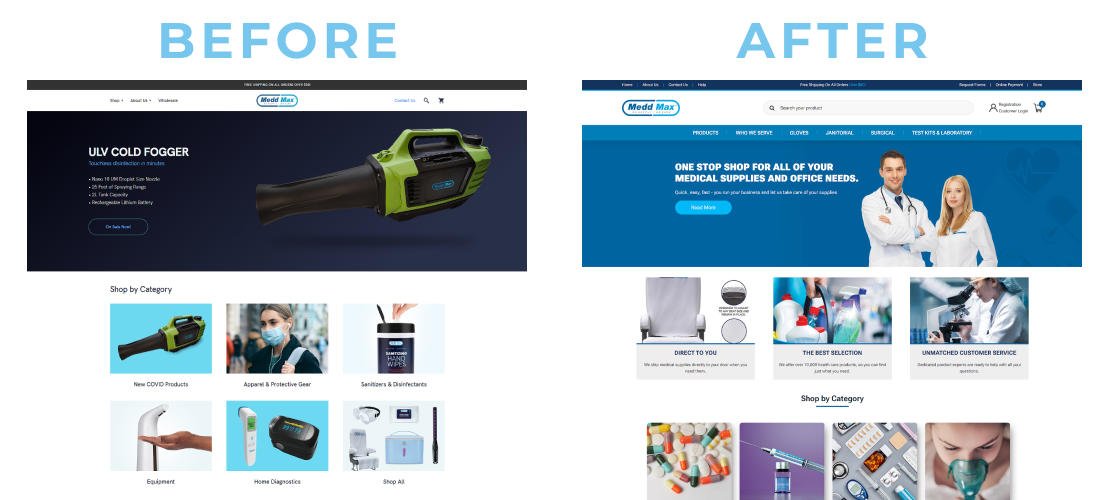
In the dynamic world of ecommerce, businesses constantly seek ways to stay competitive and enhance customer experiences. One strategic move that has gained significant traction is an ecommerce platform migration, where businesses transition from their current ecommerce solution to a new platform. This process, while often daunting, can bring forth a host of benefits and opportunities for growth. In this comprehensive guide, we will delve into the intricacies of ecommerce platform migrations, exploring key considerations, essential steps, and best practices to ensure a successful transition.
The Need for Change

In the fast-paced world of ecommerce, adaptation is a key driver of success. Ecommerce companies and businesses are increasingly recognizing the significance of ecommerce platform migrations to stay competitive and responsive to market changes.
Responding to Evolving Expectations
As online shopping habits evolve, so do customer expectations. An ecommerce platform migration often becomes necessary when businesses observe increasing bounce rates or declining conversion rates due to outdated user interfaces on their current ecommerce site. For instance, above you can see The Barn Door Hardware Store an online home goods retailer, witnessed higher bounce rates because of a clunky website design. By migrating to a more user-friendly platform, they significantly improved engagement, leading to higher conversions and customer retention.
Harnessing Technological Innovation
Technological advancements present opportunities for ecommerce growth. Businesses like Pro Audio, an online audio, video and broadcast vendor, have turned to ecommerce platform migrations to leverage AI-driven personalization and data analytics. By offering personalized product recommendations, Pro Audio enhanced customer satisfaction and increased average order values.
In essence, an ecommerce platform migration is a strategic move that enables businesses to meet evolving customer expectations and leverage cutting-edge technologies for sustained success in the digital marketplace.
Assessing Your Current Ecommerce Platform

When considering an ecommerce platform migration, a comprehensive assessment of your current ecommerce site is a critical first step. Understanding the strengths and weaknesses of your existing platform provides essential insights for a successful migration.
Evaluating Performance and Scalability
Start by evaluating the performance of your current ecommerce platform. Are loading times optimal? Is the website responsive and mobile-friendly? Assess how well your existing ecommerce platform handles traffic spikes, especially during high-demand periods such as sales or promotions.
For instance, TyTy Nursery, an online nursery and garden retailer, faced performance issues during peak seasons. Slow loading times led to frustrated customers and missed sales opportunities. This prompted them to explore an ecommerce platform migration to a solution that could better handle increased traffic, ensuring a seamless shopping experience for their customers.
Analyzing Customization and Features
Consider the extent of customization and features available on your current platform. Does it allow you to create a unique brand identity and provide the functionalities your business requires? If you find limitations in terms of design and features, it may be time to explore a platform that offers greater flexibility.
Take the case of Unisan Direct, an online cleaning supplies store. They wanted to implement a loyalty rewards program to incentivize repeat purchases, but their current platform lacked the necessary features. By migrating to a platform that offered customizable plugins and integrations, Unisan Direct was able to introduce a successful rewards program, enhancing customer engagement and loyalty.
Choosing the Right Ecommerce Platform

Selecting the new ecommerce platform that aligns with your business goals and vision is a pivotal decision. Research various ecommerce platforms first, consider their features, scalability, integrations, and pricing models. Does the platform cater to the unique needs of your ecommerce business? Will it empower you to offer enhanced shopping experiences? Ensure the new platform is capable of accommodating your long-term aspirations and demands.
Visualizing Future Growth
Your chosen ecommerce platform should not only address your present needs but also align with your future growth strategies. Visualize where you want your business to be in the next few years and assess whether the platform can support that trajectory. Consider factors like expansion into new markets, introduction of new product lines, and the potential need for additional features as your customer base evolves.
For instance, Cip1, a retailer for Volkswagen parts, had ambitions to expand internationally. They needed a platform that could seamlessly handle multi-currency transactions and language translations. By selecting a platform that offered robust internationalization features, Cip1 ensured they could pursue their growth plans without encountering technical roadblocks.
In essence, choosing an ecommerce platform is an investment in your business’s future. By aligning with your vision and future growth strategies, you position your ecommerce venture for success and ensure that your platform can evolve alongside your own business needs.
Planning Your Ecommerce Migration

Planning your ecommerce platform migration is akin to charting a voyage. Craft a comprehensive strategy that outlines each phase of the ecommerce migration checklist and process. This blueprint acts as your navigational tool, guiding you through the complexities of the migration journey.
Defining Clear Milestones
Break down your migration project and process into clear and achievable milestones. Each milestone represents a significant step towards your ultimate goal of a successful migration. Assign responsibilities, allocate resources, and set realistic timelines for completing each phase. This structured approach not only keeps your team organized but also allows for better tracking of progress.
For example, GlowbackLED, an online lighting retailer, meticulously planned their migration process. They defined milestones for data migration, theme customization, and testing. By breaking down the various data migration services used into manageable chunks, they ensured that each stage was completed efficiently, minimizing disruptions to their online store’s operations.
By crafting a comprehensive strategy and defining clear milestones, you lay the foundation for a successful ecommerce platform migration. This systematic approach streamlines the migration process, reduces the risk of errors, and ensures that your online store emerges on the new platform stronger than ever before.
Ecommerce Data Migration

Ecommerce data migration is a critical phase of the platform migration process. It involves transferring essential data, including product information, customer records, order history, and other crucial elements, from your existing system or old platform to the new one.
Ensuring Data Integrity
Maintaining data integrity is paramount during the migration process. Any discrepancies or inaccuracies can lead to customer frustration, lost sales, and operational disruptions. Utilize specialized tools and methodologies to ensure a seamless and accurate transfer of customer data. Thoroughly test the migrated data on the new platform to verify its accuracy and completeness.
For instance, Pro Armory, an online ammunition retailer, underwent an ecommerce data migration as part of their platform transition. They meticulously validated product attributes, pricing, and inventory quantities to prevent discrepancies. Rigorous testing ensured that customer orders and purchase history were seamlessly transferred, minimizing any potential disruption in service.
By prioritizing data integrity and utilizing robust migration techniques, you safeguard your digital marketing assets and ensure a smooth transition to your new ecommerce platform. This attention to detail guarantees that your customers’ shopping experiences remain uninterrupted and your business operations continue without a hitch.
Design and Customization

The design and customization of your ecommerce website play a pivotal role in capturing and retaining customer attention. When migrating an old site to a new platform, take the opportunity to refresh and elevate the visual aesthetics of your online store.
Consistent Branding and User Experience
Maintaining consistent branding across your ecommerce stores and site is essential for brand recognition and customer trust. Ensure that your new platform allows for seamless integration of your brand elements, such as logos, color schemes, and typography. A unified and visually appealing brand presence reinforces your identity and fosters a sense of familiarity among your customers.
For instance, above you’ll see Medd Max, an online medical supply retailer, recognized the importance of consistent branding during their platform migration. They seamlessly incorporated their distinctive logo and color palette into the new platform’s design. As a result, customers navigating from legacy systems to the new site experienced a smooth transition and were more likely to engage with the refreshed brand identity.
Optimized User Interface
User-friendliness is key to a successful ecommerce website. A streamlined user interface (UI) simplifies navigation, making it effortless for customers to browse products, add items to their carts, and complete purchases. Prioritize platforms that offer intuitive UI customization options to ensure a seamless shopping journey for your customers.
Take the case of Action Village, an online extreme-sports store. During their ecommerce platform migration, they focused on optimizing the UI to provide a user-friendly experience. The new platform’s drag-and-drop design features allowed Action Village to create a visually appealing homepage that showcased their latest products and promotions. The improved UI led to higher engagement rates and increased conversions.
By prioritizing aesthetic appeal, consistent branding, and an optimized user interface, you ensure that your ecommerce website on the new platform captivates your audience and offers a seamless and visually pleasing shopping experience.
Testing and Quality Assurance

Before unveiling your migrated ecommerce store, comprehensive testing is essential to identify and rectify any potential issues. Thoroughly test all aspects of your website, including functionality, usability, compatibility, and performance, to ensure a seamless transition for your customers.
User Experience Testing
Put yourself in your customers’ shoes. Test the entire shopping process, from browsing products to completing a purchase. Ensure that links, buttons, and forms function as expected, and that the checkout process is smooth and intuitive. Address any friction points to provide a user experience that encourages conversions.
For example, Byourbed, an online bedding retailer, conducted extensive user experience testing as part of their migration process. They simulated various customer journeys, identifying and rectifying issues like broken links and confusing navigation. This meticulous testing resulted in a user-friendly and glitch-free shopping experience on their new platform.
Performance Optimization
A slow-loading website can drive potential customers away. Test the performance of your migrated platform, checking page load times and responsiveness across different devices and browsers. Implement optimizations such as image compression and caching to ensure fast and seamless browsing for your users.
Consider the case of Bike Bling, an online bicycle retailer. They prioritized performance optimization during their platform migration, resulting in significantly improved loading times. This led to reduced bounce rates and increased page views, translating into higher customer satisfaction and improved search engine rankings.
By conducting rigorous testing and quality assurance, you guarantee that your migrated ecommerce store functions flawlessly and provides an exceptional user experience. This attention to detail ensures a smooth transition for both new and returning customers.
Training and Transition

As you prepare to launch your new ecommerce platform, ensure your team is well-equipped to navigate the changes. Provide comprehensive training on the new platform’s features, tools, and functionalities to empower your staff to effectively manage and operate the new system.
Hands-On Workshops
Organize hands-on workshops and training sessions to familiarize your team with the new platform’s interface and backend operations. Cover essential tasks such as adding products, managing inventory, processing orders, and utilizing analytics. Encourage questions and practice scenarios to ensure your team gains confidence in using the new tools.
For instance, Long Island Watch, an online watch retailer, conducted interactive workshops for their staff during their platform migration. They guided their team through tasks like updating product listings and tracking customer orders. This proactive approach minimized disruptions and ensured a seamless transition of existing content to the new platform.
Continuous Support
Offer ongoing support and resources for your team post-migration. Provide a dedicated point of contact for any platform-related inquiries or issues. Regularly assess your team’s progress and address any challenges that arise to ensure they are maximizing the platform’s capabilities.
By prioritizing training and transition, you empower your team to effectively leverage the features of the new ecommerce platform. Well-trained staff contribute to efficient operations, a smoother customer experience, and a successful platform migration.
Go Live and Post-Launch

After meticulous planning and execution, it’s time to unveil your new ecommerce platform to the world. But the launch is just the beginning—continuously monitor, analyze, and refine your one ecommerce platform, to drive ongoing success.
Initial Launch Strategies
Execute well-thought-out launch strategies to create buzz and anticipation. Utilize email marketing, social media, and targeted promotions to announce your platform’s debut to your audience. Highlight new features, improved user experience, and any exclusive launch offers to entice both new and existing customers.
For example, Timewalker Toys, an online figurine dealer, celebrated their platform migration by offering exclusive discounts to their loyal customers for the first week. This strategy generated excitement and encouraged repeat purchases, resulting in a successful transition.
Continuous Optimization
Monitor your platform’s performance and user behavior post-launch. Utilize analytics tools to gain insights into customer interactions, conversion rates, and other key metrics. Identify areas for improvement and implement iterative changes to enhance the user experience further.
Phastek Performance, an online car parts dealer, tracked user engagement on their newly migrated platform. They analyzed customer feedback and behavior, leading them to optimize their product categorization and search functionalities. This ongoing optimization resulted in increased product discoverability and improved customer satisfaction.
By executing a strategic go-live plan and prioritizing post-launch optimization, you ensure a successful transition to your new ecommerce platform. Continuous monitoring and refinement contribute to sustained growth and customer satisfaction, solidifying your position in the competitive online marketplace.
Conclusion: Navigating the Future

An ecommerce platform migration is a significant endeavor, but with proper planning and execution, it can lead to remarkable growth and enhanced customer experiences. By understanding your current landscape, selecting the right platform, and following a comprehensive migration process, you position your ecommerce business for success in an ever-evolving digital marketplace.
Mitch is an experienced eCommerce Project Manager specializing in delivering seamless online experiences and driving digital growth. With expertise in project planning, platform optimization, and team collaboration, Mitch ensures every eCommerce initiative exceeds expectations. Passionate about innovation and results, Mitch helps businesses stay ahead in the dynamic digital landscape.

